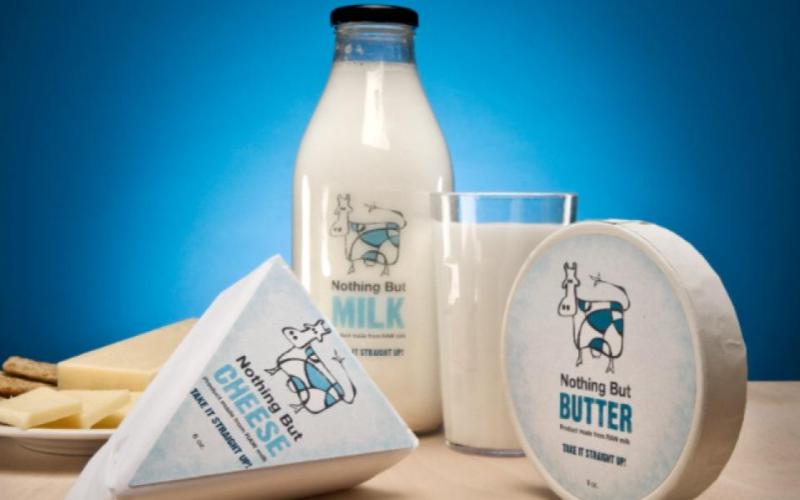The Dairy Packaging Market to Surpass $68.2 billion by 2033

The Global Dairy Packaging market was valued at $45.8 billion in 2024 and is expected to reach $68.2 billion by 2033.
This robust growth trajectory is primarily driven by the increasing global demand for dairy products, coupled with advancements in packaging technology that enhance product shelf life, convenience, and sustainability. As consumer preferences shift towards healthier and more convenient food options, dairy packaging solutions are evolving to meet these needs, offering improved safety, portability, and eco-friendliness. The ongoing urbanization, rising disposable incomes, and expanding retail infrastructure further bolster the market’s expansion, making the dairy packaging sector a critical component of the global food packaging industry.
Introduction
Dairy products hold a special place in our diets—whether it is milk in the morning coffee, cheese on a sandwich, or yogurt as a healthy snack. But behind every glass of milk or scoop of ice cream is an unsung hero: dairy packaging. Packaging not only ensures freshness but also plays a crucial role in safety, sustainability, and consumer convenience.
As lifestyles evolve and technology advances, the way we package dairy products is undergoing a transformation. Today’s packaging solutions are no longer just about containment; they’re about extending shelf life, reducing waste, and aligning with eco-friendly values.
Why Dairy Packaging Matters
Unlike many food products, dairy is highly perishable. From farm to fridge, proper packaging helps maintain nutritional value and prevents spoilage. It also safeguards consumers from contamination, ensuring trust in the product they purchase.
Key roles of dairy packaging include:
- Preservation: Extending shelf life while keeping taste intact.
- Protection: Shielding against bacteria, light, and environmental damage.
- Convenience: Easy-to-open and resealable designs for busy lifestyles.
- Sustainability: Reducing plastic waste and adopting eco-conscious alternatives.
Evolution of Dairy Packaging:
Traditional Approaches
Decades ago, milk was delivered in reusable glass bottles. While eco-friendly, they were fragile and required careful handling.
Shift to Plastics and Cartons
The mid-20th century saw the rise of plastic bottles, jugs, and paperboard cartons, offering lightweight, affordable, and durable solutions.
Modern Packaging
Today, packaging combines functionality with technology. From aseptic cartons that keep milk fresh without refrigeration to biodegradable films, dairy packaging has become a science in itself.
Current Trends in Dairy Packaging:
1. Smart Packaging
Innovations like QR codes and freshness indicators are making dairy packaging more interactive. Consumers can scan packages to track sourcing details, expiration updates, or even recipes.
2. Sustainable Solutions
With growing concerns about plastic pollution, the industry is shifting toward:
- Biodegradable plastics
- Compostable films
- Reusable glass containers
- Paper-based cartons with plant-based liners
3. Portion Control and Convenience
Busy consumers prefer single-serve packs of milk, yogurt, and cheese. These smaller portions reduce waste while fitting modern on-the-go lifestyles.
4. Aseptic and Extended Shelf-Life Packaging
Through sterile packaging environments and high-tech sealing, dairy products can now last weeks—or even months—without preservatives.
Drivers Behind Innovations:
Health and Safety Concerns
Foodborne illnesses demand strict safety measures. Packaging advancements like tamper-evident seals and antibacterial coatings provide reassurance.
Environmental Responsibility
Governments and consumers alike are pressuring companies to cut down on single-use plastics. Dairy brands must now balance functionality with eco-friendliness.
Changing Consumer Preferences
Younger generations value convenience, transparency, and sustainability. Packaging that communicates origin, nutrition, and eco-credentials is more likely to attract attention.
Technological Advancements
3D printing, nanotechnology, and smart sensors are helping manufacturers develop lighter, stronger, and more sustainable packaging materials.
Opportunities in the Dairy Packaging Market
The dairy packaging industry presents multiple opportunities for innovation:
- Edible Packaging: Research into edible films made from milk proteins or seaweed is gaining momentum.
- Digital Engagement: QR-enabled packaging can enhance brand loyalty by connecting with consumers through recipes, games, or sustainability updates.
- Reusable Systems: Subscription-based milk delivery in reusable glass bottles is making a comeback in some urban markets.
- E-commerce Packaging: As dairy products are increasingly sold online, insulated and secure shipping solutions are essential.
Challenges in Dairy Packaging
Despite advancements, the sector faces hurdles:
- High Costs: Sustainable alternatives often cost more than conventional plastics.
- Logistics: Maintaining freshness during transportation is still a challenge, especially in developing regions.
- Regulatory Pressure: Packaging must comply with strict food safety and sustainability guidelines, which can increase complexity for producers.
- Consumer Perception: While eco-packaging is growing, some consumers remain skeptical about durability or affordability.
Global Market Insights
The global dairy packaging market is expanding alongside rising demand for dairy products.
According to industry analysts, it is projected to grow steadily over the next decade, driven by:
- Urbanization: Increasing consumption of packaged dairy in cities.
- Growing Middle-Class: Rising disposable incomes leading to demand for premium dairy products with premium packaging.
- Sustainability Push: Governments encouraging companies to reduce carbon footprints.
- Innovation in Retail: Supermarkets and online platforms demanding attractive, safe, and eco-friendly packaging solutions.
North America and Europe currently lead in innovation, while Asia-Pacific shows the fastest growth due to increasing dairy consumption in India, China, and Southeast Asia.
The Future of Dairy Packaging
The future promises packaging that is smarter, greener, and more consumer-centric. Expected innovations include:
- Nanotechnology-based packaging to enhance barrier properties.
- Edible coatings to eliminate waste entirely.
- Blockchain-enabled packaging for complete transparency from farm to fridge.
- Reusable circular systems that cut down single-use waste and encourage recycling.
By 2030, the dairy aisle could look vastly different, with packaging that tells a product’s full journey, assures freshness, and leaves minimal environmental impact.
Conclusion
Dairy packaging is no longer just about holding milk or cheese; it’s about preservation, safety, convenience, and sustainability. As consumer expectations evolve, packaging innovations will define the future of dairy products. From biodegradable cartons to smart labels, the industry is moving toward solutions that not only keep dairy fresh but also protect our planet. In this rapidly evolving landscape, dairy packaging stands at the intersection of technology, health, and environmental responsibility—a true reflection of modern consumer values.

